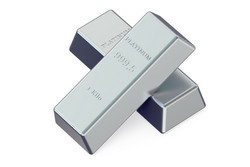Low- to no-platinum fuel cell catalysts
Platinum (Pt)- or Pt alloy-based catalysts at the anode and cathode of the membrane electrode assembly (MEA) speed the chemical reactions that generate electron flow or current. The catalysts are supported on solid substrates often based on carbon materials. These supports are subject to degradation, decreasing service lifetime and resulting in a requirement for higher Pt loading. The EU-funded CATAPULT (Novel catalyst structures employing Pt at ultra low and zero loadings for automotive MEAs) project is developing technology to solve the problem. Scientists are focusing on both ultra-thin, extended-film Pt coatings as well as non-Pt group metal (PGM)-based catalysts, and even hybrids of the two. In addition, the use of fibrous structures as catalyst supports is an emerging concept due to their high surface area to volume ratio and the void volume generated by their packing. Already within the first 18 months the team has demonstrated achievements beyond original targets. Scientists developed a low-Pt loading catalyst whose very high mass activity (current generated per milligram of Pt) exceeds ambitious project targets. Five novel non-PGM catalysts based on metal organic frameworks and having mass activity higher than current state of the art have also been prepared. Finally, a hybrid consisting of iron and an ultra-low-Pt catalyst has demonstrated excellent electrochemical activity. CATAPULT is also producing corrosion-resistant fibrous and tubular support structures with electrospinning, an innovative technique that enables controlled creation of 1D nanomaterials. Target conductivity and electrochemical stability have already been obtained with several oxide-type nanowire and nanotube materials. Improved models of large-scale molecular dynamics have significantly decreased computation time relative to conventional (density functional theory) methods and are pointing to more promising non-carbon support systems. Demonstration of low Pt usage and reduced support degradation relative to MEA catalysts will pave the way to widespread commercialisation of fuel cell-powered vehicles. Its achievement by the CATAPULT consortium will put the EU at the forefront of a huge global market.
Keywords
Platinum, fuel cell, catalyst, membrane electrode assembly

